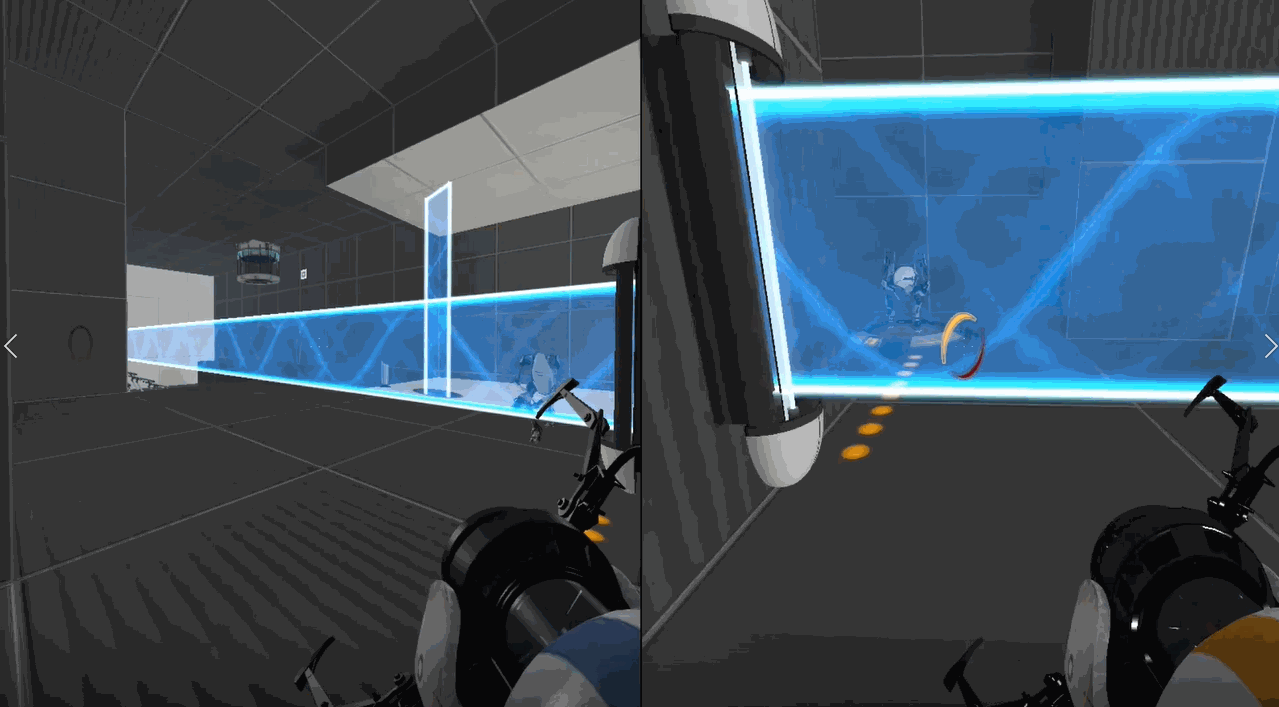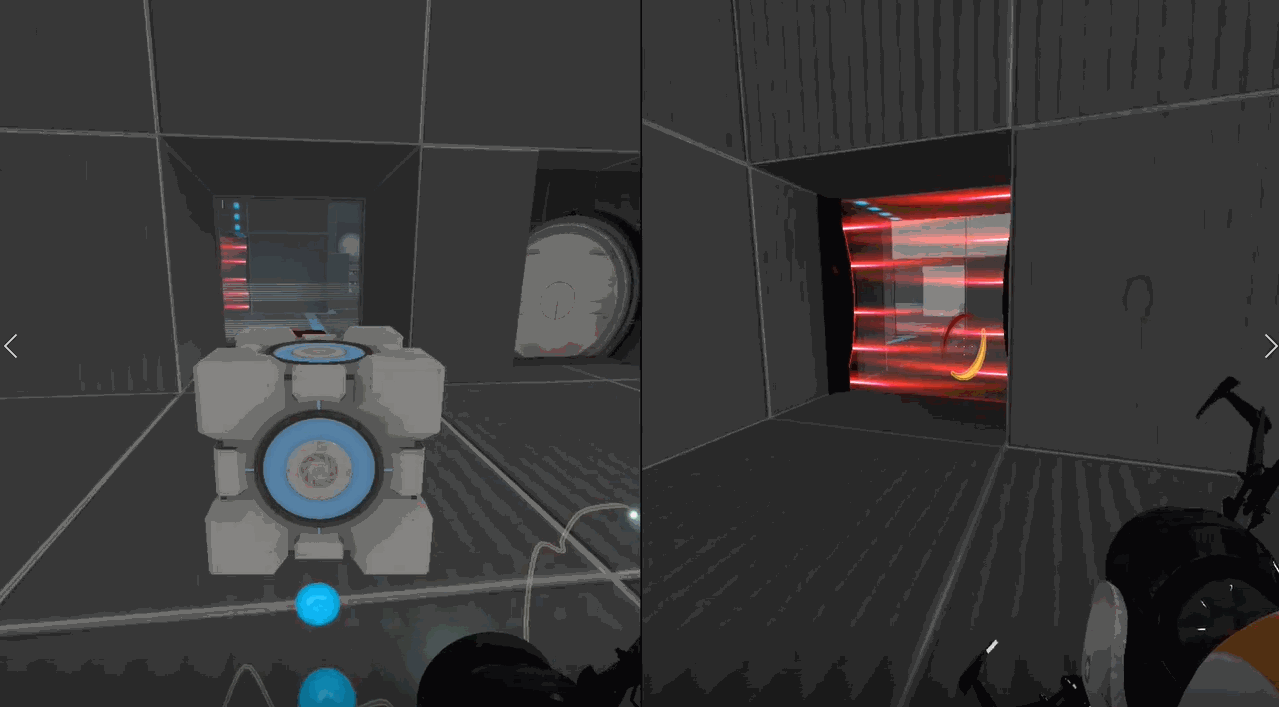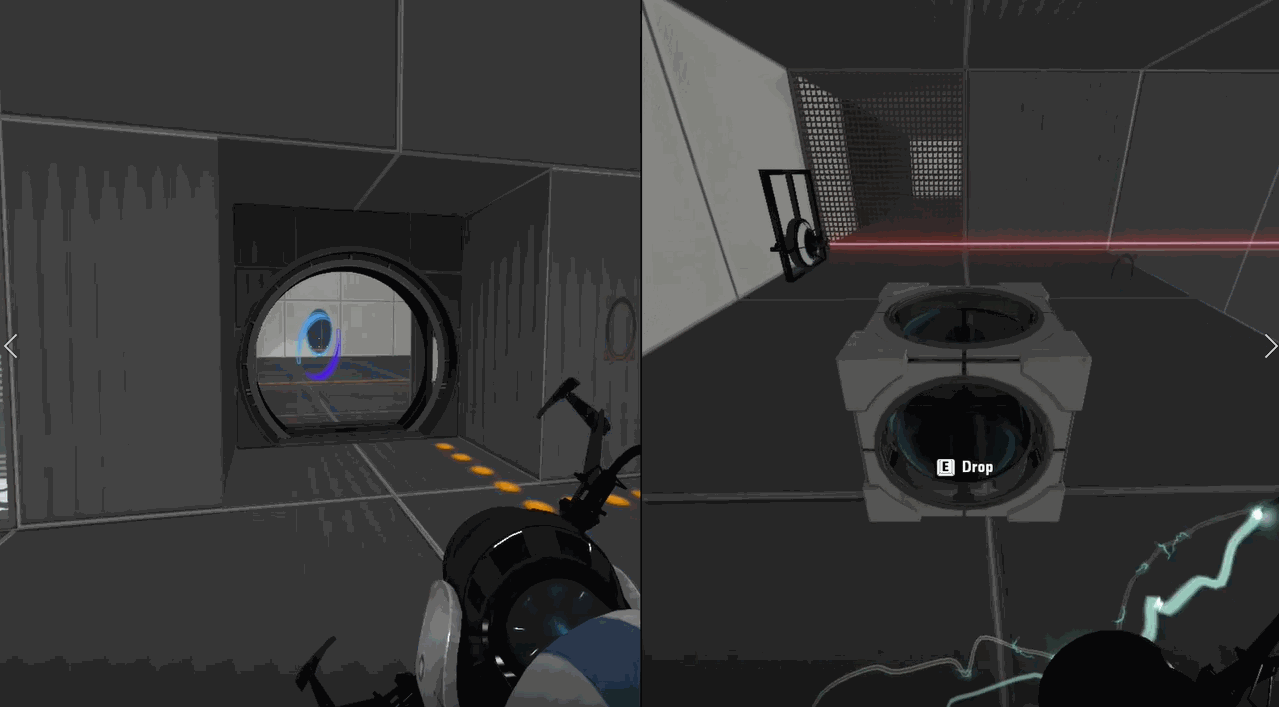Best Practice for Co-op Puzzle Design
Introduction
Cooperation puzzle games are a game genre that provides two players unique puzzle-solving gameplay in a shared environment or several related worlds. This thesis mainly discusses methodologies to create good cooperated puzzles and introduces a best practice for puzzle design. The artifact is described as a series of co-op levels within Portal2, containing 3 levels for each design pattern and 1 final level.
Develop Info
Game Engine:
Game:
Mode:
Start Date:
Defense Date:
Time Spent:
Valve's Hammer
Portal 2
Cooperative Level
08/25/2020
05/05/2021
320 - 360 Hours
Playable Levels
Methodology
3 common cooperation design patterns
Design Pattern
Description
Test Skills
Serialization
Operating one or more objects in a certain order that could not be operated by a single player alone
Puzzle-solving
Parallelization
Operating one or more objects simultaneously that could not be operated by a single player alone
Trust, Harmony
Separation
Forcing the players to split up and pushing them to go ahead without physical teammates nearby
Communication
4 stage co-op puzzle design theory
STAGE 1: Create a serialization puzzle moment for two players
-
Start with a mechanic, set clear rules and objectives
-
Design a puzzle within several steps, it could be a solvable sequence for a single player
-
Divide the puzzle into chunks, add restrictions to make it impossible for a single player
STAGE 2: Add extra gameplay in other design patterns
-
Add parallelization gameplay by designing a common goal, it requires them to build a clear division of labor
-
Add separation gameplay by splitting spaces into two or more, it requires them to share information well
STAGE 3: Design "wow" moments
-
Create a catch for the serialization puzzle sequence, it helps the players to understand the mechanics better
-
Add a time challenge for the parallelization puzzle sequence, it creates an emotional connection between two players
-
Design a re-union after players being separated for a while, it's a psychological reward to the players
STAGE 4: Balance the gaming experience
-
Split tasks for players, do not let the players wait
-
Split information for players, let them talk
-
Have cooperative tasks and common goals for players, make them feel engaged
Final Artifact
Level 1: "I cannot do that now!"
Goal: Introduce serialization gameplay to players
Elements: Light Bridge
Design Methods:
-
A light bridge is enabled if Player A is standing on a button, then Player B can walk to the next space by using the bridge.
-
To rotate a light bridge and make it walkable, it requires both players to fire portal walls on certain positions.
Level 2: "3! 2! 1! Go!"
Goal: Introduce parallelization gameplay to players
Elements: Light Bridge, Turret, Faith Plate
Design Methods:
-
To land on the upper floor, the players must use the faith plate at the same time so that they will hit each other in the air and fall.
-
To prevent being killed by turrets, the players must move forward at the same speed and continue to fire portal walls.
Level 3: "Do you see that?"
Goal: Introduce separation gameplay to players
Elements: Laser Emitter, Tractor Beam
Design Methods:
-
Players are split into different rooms at the very beginning.
-
When they stand on a button in their room, a device in the other room will be enabled.
-
To understand the purpose of a laser emitter, they must fire portal walls in their own room and share the changes they see.
Level 4 - The Final Level: "One more try"
Goal:
-
Implement 4 stage design theory into practice
-
Create an interesting puzzle level containing 3 different design patterns
Elements: Light Bridge, Laser Emitter, Tractor Team, Turret
Final Level Deconstruction
Puzzle Catch Design
Example 1: Adding parallelization moment into serialization gameplay
-
The level starts with the same mechanics used in Level 1, the light bridge.
-
(Serialization) When player A stands on a button to enable the bridge, player B can walk on it.
-
However, the enabled bridge also blocks player B from moving forward in the final level.
-
(Parallelization) Player A must release the button for a very short while in order for player B to pass.

Example 2: Adding parallelization moment into separation gameplay
-
In level 3, player A operates buttons in the correct order to deliver player B to their destination.
-
(Separation) In the final level, player A should also do similar things to send player B to the destination.
-
However, they cannot pause and observe during the operations. If they do so, player B will die of drowning.
-
(Parallelization) Player B must share the real-time feedback with Player A and Player A must accurately follow instructions from Player B to ensure that the operations are done at the correct time.

WOW Moment Design
Example 1: A reunion moment is designed for the players after they've been physically separated shortly.

Example 2: The laser emitter is reused in the later sections after the players obtain a cube to reflect the laser beam.

Takeaway
-
The audience is holding high tolerance for serialization levels because they can hardly accomplish the puzzles by themselves. Having clear objectives for the puzzles is an effective way to make this kind of gameplay interesting.
-
Communication plays a very important role in good co-op puzzle games, especially for parallelization gameplay and separation gameplay.
-
Serialization gameplay and separation gameplay have advantages in increasing puzzle difficulties, however, parallelization gameplay has its own advantages in increasing challenges and fun.
-
Setting clear goals is a key to success for serialization and separation puzzle design as timing is the key for parallelization.
-
Players never like waiting when their partner is operating with objects.

